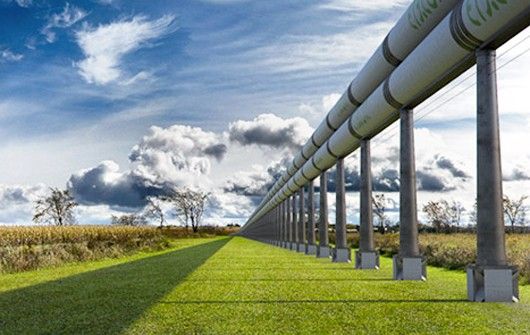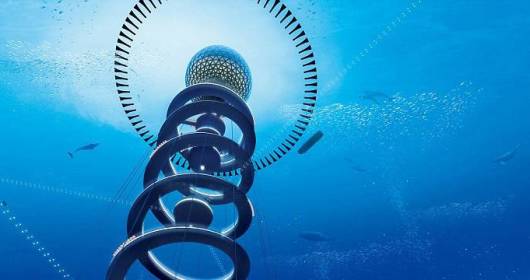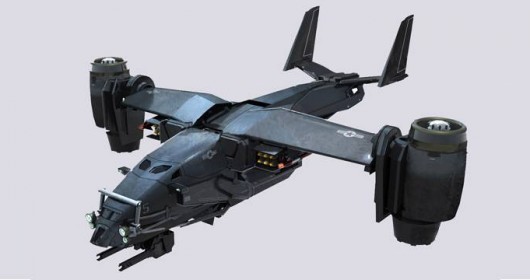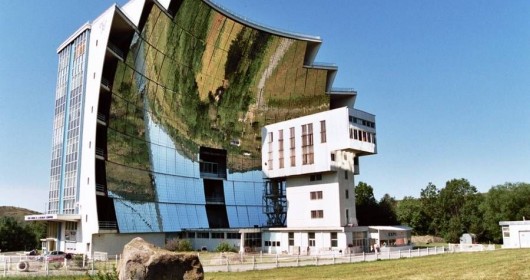Although there are similarities to the Startram concept we looked at recently, this take on maglev-like transport is all on terra firma and, if it ever eventuates, would take passengers from New York to Beijing in just two hours. Advocates of Evacuated Tube Transport (ETT) claim it is silent, cheaper than planes, trains or cars and faster than jets.
The basic plan is, well, as old as the enabling patent, US Patent 5950543, whose description is quite thorough. Issued in 1999, there remain seven years on the term of the patent, which is assigned to ET3.com, Inc., a licensing organization that hopes to head an alliance of players to fund and construct demonstration facilities.
The short version of the ETT story is as follows: put a superconducting maglev train in evacuated tubes, then accelerate using linear electric motors until the design velocity is attained. As the motors are integrated into the evacuated tubes, the conveyance capsules which travel in the tube need have no moving or electrically activated parts – passive superconductors allow the capsules to float in the tube, while eddy currents induced in conducting materials drive the capsules. Efficiency of such a system would be high, as the electric energy required to accelerate a capsule could largely be recaptured as it slows.
The most practical model system is based on car-sized passenger/cargo capsules that travel in 1.5 m (5 ft) diameter vacuum maglev tubes. The maglev tubes are permanently maintained at near vacuum conditions, and the capsules are inserted into and removed from the tubes through airlocks at stations along the route. After the capsules are accelerated to the design velocity (some 4,000 mph or 6,500 km/h), they coast for the remainder of the trip. There is no drag from traveling through air, and although small oscillations in the maglev suspension do cause a bit of inefficiency, it is a tiny fraction of the rather immense kinetic energy of an occupied capsule – which with a car of about 550 kg (1,212.5 lb) traveling at 4,000 mph is just about 244 kWh.
The capsule speed will depend on the length of the trip, as it takes time to accelerate. Given a nominal acceleration of 1 g, it takes about 3 minutes to reach 4,000 mph, at which point the capsule has traveled over 100 miles (161 km). ET3.com, Inc. believes that a reasonable speed for shorter trips is 370 mph (600 km/h). While tubes could be networked like freeways, with capsules automatically routed along their trip, local and long-distance trips would require separate maglev tubes to avoid unreasonable scheduling delays. Around the world in just over six hours isn’t orbital velocity, but the practical benefits would be nearly the same – vital goods and talent delivered quickly to where they are needed.
Members of the ET3 consortium have worked with parties in China, where they say more than a dozen licenses for the company have been sold. As an open consortium, licensees become owners of the company and the group claims more than 60 licenses have also been sold in five different countries, with interest from several more. But with licenses selling through the ET3 website for US$100, a lot more people will need to get on board to turn the dreams of those behind the concept into a reality. The company is developing a 3D Virtual Ride for the system with those interested in hitching a ride able to submit their contact details here. Unfortunately, the prelaunch for the virtual ride was set for last year and it still hasn’t eventuated.
Promising concept or pipe dream? Let us know your thoughts in the comments section.
Source (article and images) : http://www.gizmag.com/et3-vacuum-maglev-train/21833/
[sc:end t=”New York To Beijing In Two Hours Without Leaving The Ground”]











Leave a Reply